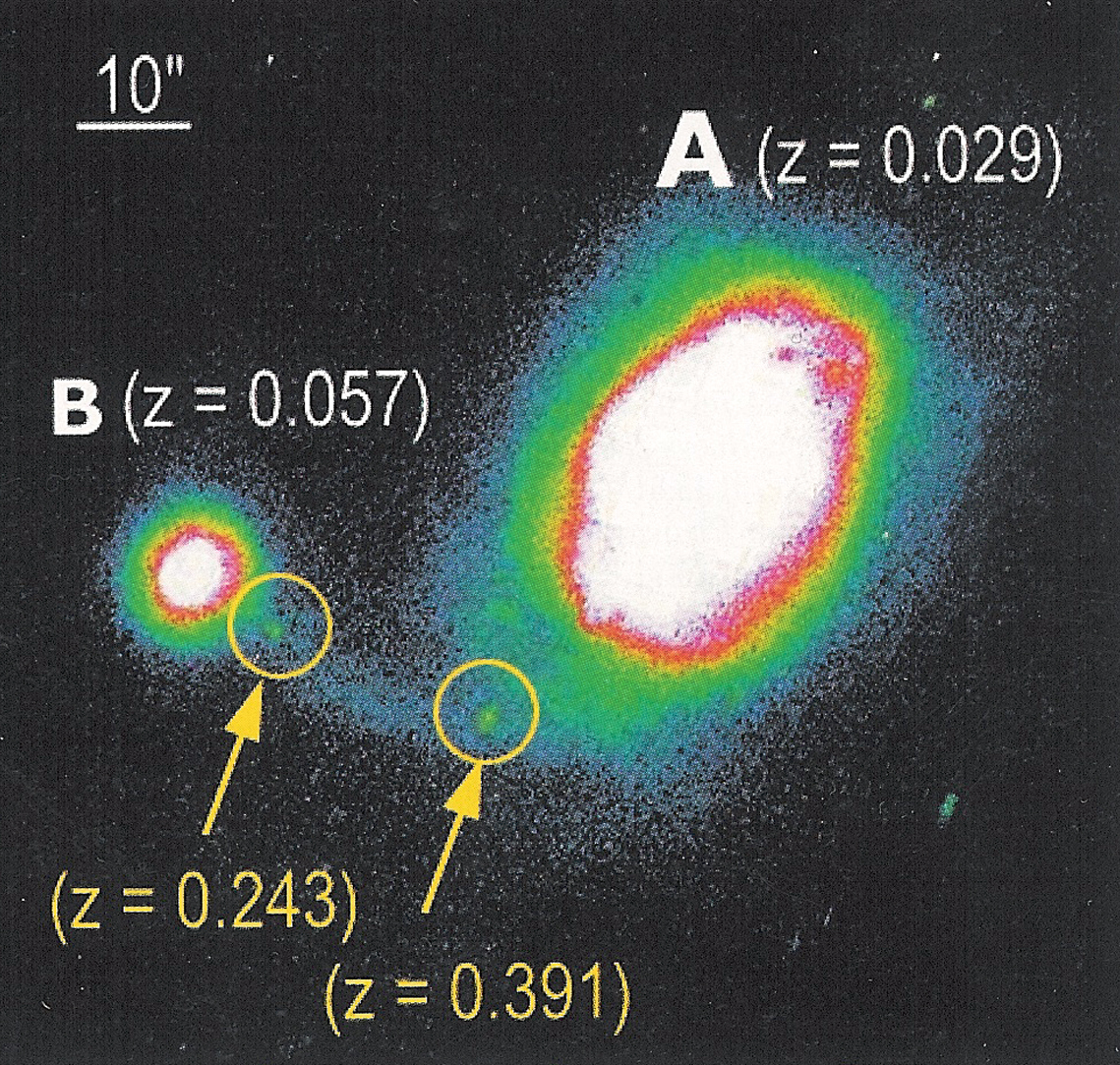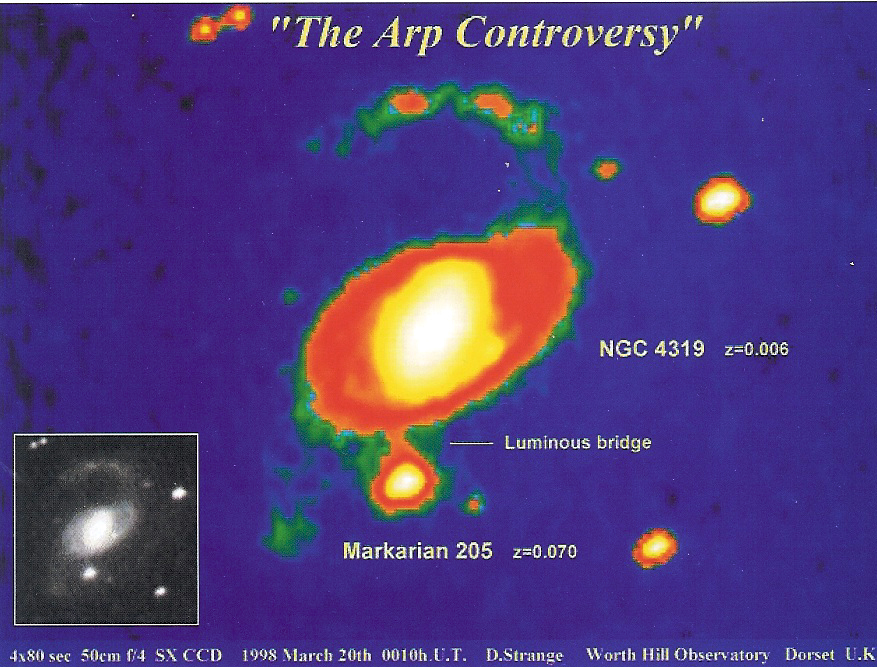

So how it is possible that masses that would have different ages compared to “time zero” of Big Bang are located at the same distance from us that are observing ? There are much theories that try to explain these phenomenon , like “variable mass” one, but the principle of the “initial event” seems to be objectionable.
Does it, perhaps, necessary to consider BB a local event in a stationary universe ?
With reference to the second picture, in an article of Bahcall and others. published in 1992 "The near-ultraviolet spectrum of Markarian 205" it states that: "... NGC 4319 Absorbs some of the light from Mrk 205, just as expected if NGC 4319 is projected in front of Mrk 205."
This is the abstract :
"We report measurements of the absorption and of the emission lines between 1600 and 3200 A in the spectrum of the nearby AGN Markarian 205 (z = 0.071), which lies at a projected distance of 3 kpc (H0 = 100 km/s) from the nucleus of the nearby barred spiral galaxy, NGC 4319 (z = 0.0047). The results were obtained using high-resolution (R = 1300) observations with the Faint Object Spectrograph of the HST. A total of 15 absorption lines, 13 of which are produced by Galactic gas, and four AGN emission lines are detected. Two of the absorption lines, the Mg II resonant doublet, are produced by gas in the intervening galaxy NGC 4319. This is the first detection of absorption due to intervening gas in this famous quasar-galaxy pair".
The logic is as follows : lets suppose that we have a galaxy "A" and a quasar "B" appearing to have overlapping, but with different redshift. The galaxy has z = 0.1, the quasar z = 0.2. The galaxy at z = 0.1 can 'produce a spectral absorption on the radiation that comes from quasar at z = 0.2 away, according with Hubble’s law that states redshift bound in proportional way to the distance from the observer. The two objects are close only prospectively. The absorption lines have, in fact, redshift 0.1. If we would find the reverse situation, that is B imprinting absorption lines, but with 0.2 redshift. evidently the correlation between red shift and distance would be falsified.
So far, has been found the first case, never the second.
BB is a "relativistic" theory that backwards in the universe history since to a "singularity" where mathematically "diverges" and is not "renormalizable" that is that the infinites of asymptotic solutions are not removable. This happens cause, taking off space to matter, you constrain space time curvature to be "absolute" and not relative and so you "force" it to make a role that can't act : to explain gravity force.
But let’s return to galaxies recession and to the so called “dark energy” that one, for understand, that would give the field of force that put away (or bring near) the heavenly bodies. In the hypothesis of a “stationary” universe Einstein identified it as the “cosmologic constant” disowned by himself successively. Today it talks also about “zero point” energy or vacuum specific energy to justify the acceleration between galaxies. The actual target of experimental research is the “adaptation” of General Relativity to Quantum Mechanics, trying to detect the quantum mediator of gravitational force (the graviton).
The problem is that gravitational theory of GR was thought for a continuous space time not for a quantized one, so the existence of gravitational quantum would be an internal contradiction of the same theory.
The Marius gravitational theory inquires into what could be the real physical nature of this “universal engine”.
Stefano Gusman.

Nessun commento:
Posta un commento